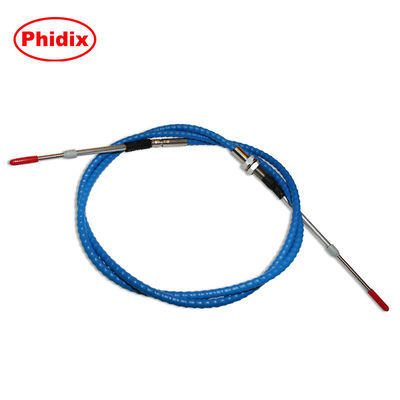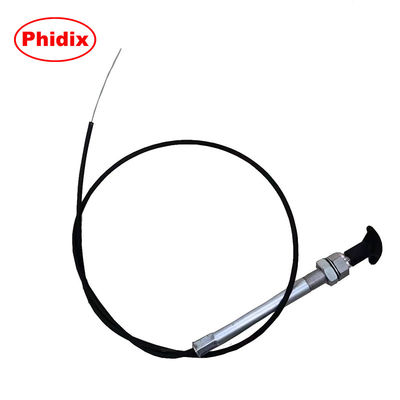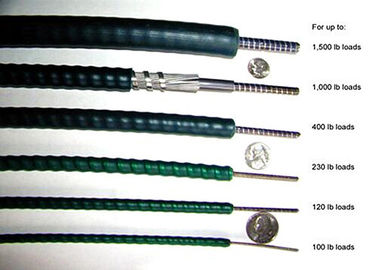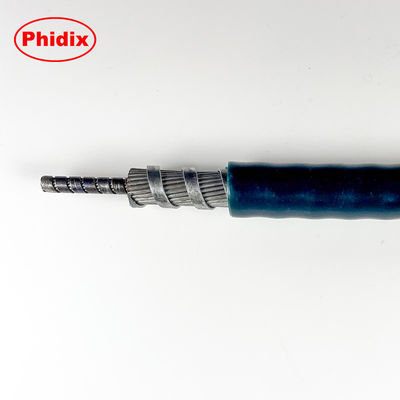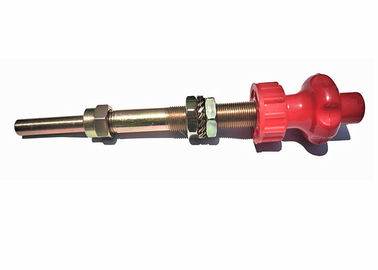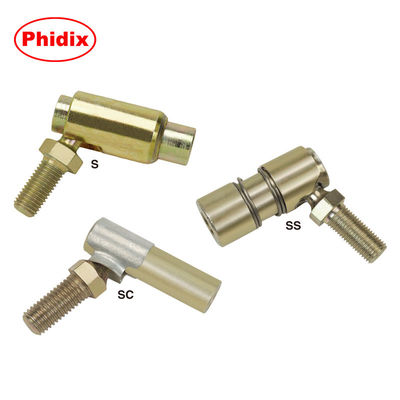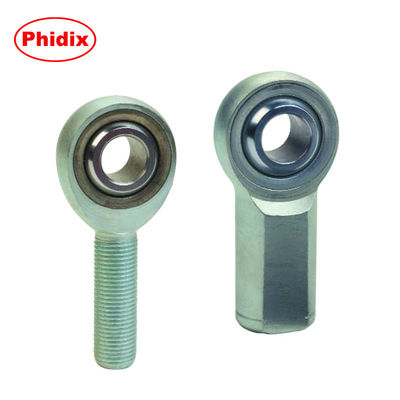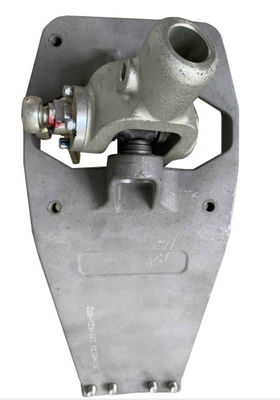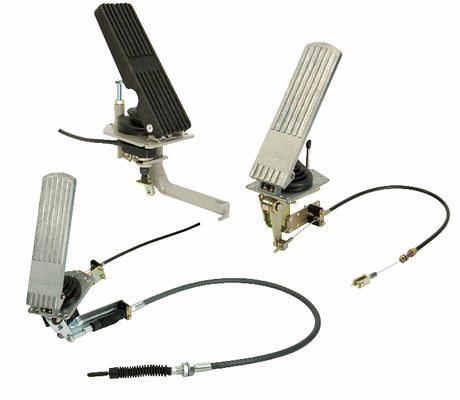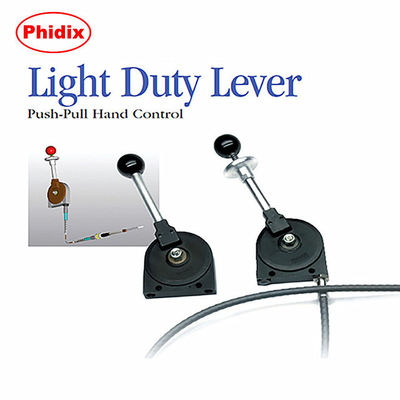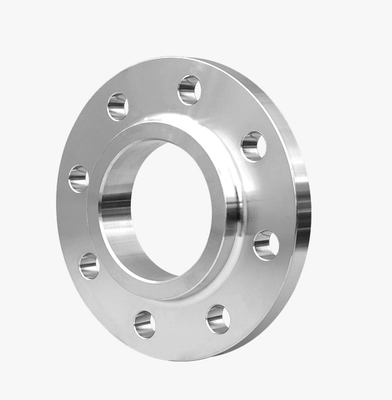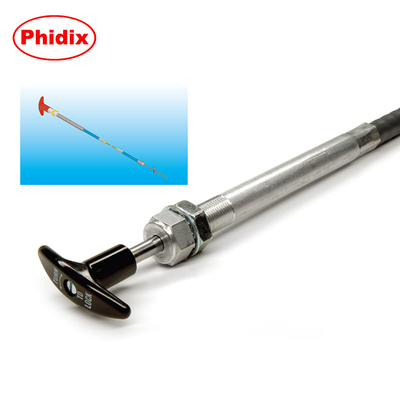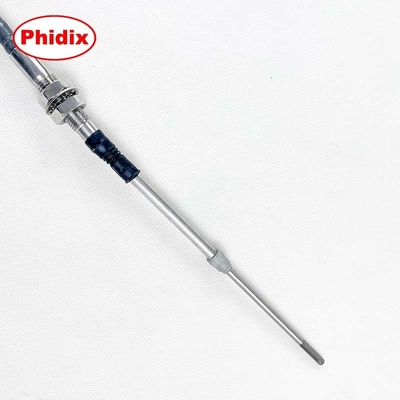Why Control Head Type Matters More Than You Think
When specifying a push-pull control cable, most engineers focus on stroke, core type, or output end. But there's one choice that quietly determines user safety, operational stability, and ergonomic feel:
The control head locking mechanism.
Should you go with a Twist-Lock? A Button Lock? Or just a Non-Lock cable?
Each mechanism serves a different purpose. In this guide, we break down the key differences so you can match the right structure to your application—whether it’s for a PTO, throttle, hydraulic valve, or engine shut-off system.
1. Twist-Lock Control Head: Reliable Hold in Vibrating Systems
Key Characteristics:
• Locking achieved by quarter-turn of the T-handle
• Holds position under vibration, mechanical load, or slope
• Requires manual twist to unlock—intentional release only
Best Used In:
• PTO engagement on agricultural and industrial vehicles
• Choke control on cold-start diesel engines
• Hydraulic valve positioning on construction equipment
Pros:
• Excellent vibration resistance
• Easy tactile feedback
• No need for spring-loaded components
Consider: Requires manual twist every time—ideal for settings that remain fixed during operation.
2. Button Lock Control Head: Fast Lock, Fast Release
Key Characteristics:
• Push button engages/disengages locking pin
• Allows quick adjustment and relocking
• Common in heavy equipment and industrial panels
Best Used In:
• Repetitive throttle adjustments
• Operator console panels
• Parking brake levers
Pros:
• Fast lock/unlock cycles
• Clear detent action for confirmation
• Compatible with glove operation
Consider: Slightly more complex structure; spring mechanism may wear over time in harsh environments.
3. Non-Locking Control Head: Simplest, for Momentary Control
Key Characteristics:
• No integrated locking mechanism
• Control returns based on load or friction
• Lightest and lowest-cost option
Best Used In:
• Temporary actuation (e.g., choke pull only during start)
• Environments with low vibration or no critical hold requirement
Pros:
• Lightweight and compact
• Cost-effective for short-duration control
Consider: Not suitable where constant position retention is needed.
Comparison Chart
| Feature |
Twist-Lock |
Button Lock |
Non-Lock |
| Vibration Resistance |
Excellent |
Good |
Poor |
| Position Holding Strength |
High |
Moderate |
Low |
| Operation Speed |
Slower |
Fast |
Fast |
| Risk of Accidental Change |
Very Low |
Low |
High |
| Best for Fixed Settings |
Yes |
Moderate |
No |
| Best for Repetitive Use |
Moderate |
Yes |
Yes |

How to Choose for Your System
| Application |
Best Control Head Type |
Rationale |
| PTO Activation (Agriculture) |
Twist-Lock |
Prevents disengagement from vibration |
| Remote Engine Shut-Off |
Twist-Lock |
Failsafe position hold |
| Panel-Mounted Throttle |
Button Lock |
Allows rapid, repeated control |
| Cold Start Choke |
Twist-Lock or Non-Lock |
Twist-Lock for hold, Non-Lock for quick pull |
| Marine Control Head |
Twist-Lock or Button Lock |
Environment-dependent; both offer lock capability |
Phidix Offers All Three—But Twist-Lock Leads for Safety
At Phidix, we manufacture all three locking styles to suit different customer needs—but for environments involving vibration, safety-critical control, or fixed-setting applications, our engineering team consistently recommends Twist-Lock control heads.
Explore the Phidix Twist-Lock Cable Series or reach out to configure your custom locking control solution.

 Your message must be between 20-3,000 characters!
Your message must be between 20-3,000 characters! Please check your E-mail!
Please check your E-mail!  Your message must be between 20-3,000 characters!
Your message must be between 20-3,000 characters! Please check your E-mail!
Please check your E-mail! 
